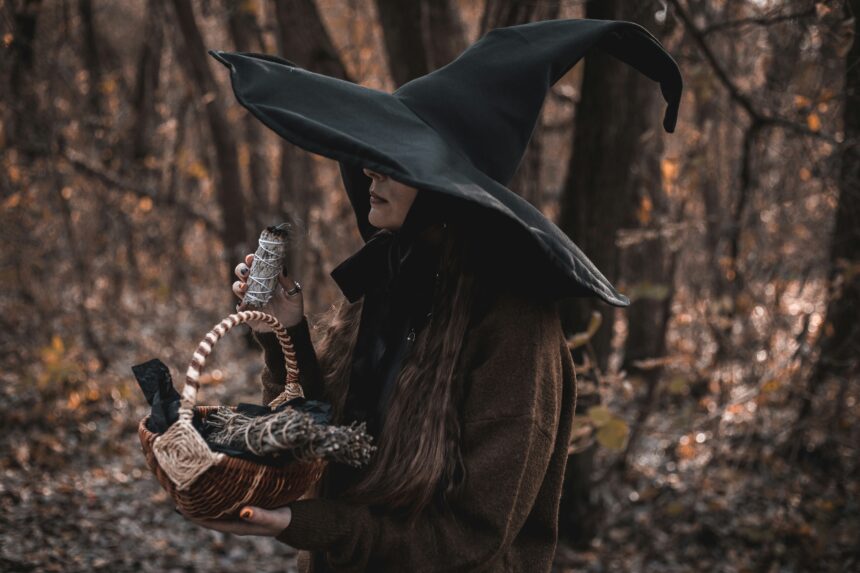Photo by Ksenia Yakovleva on Unsplash
“When a woman thinks alone, she thinks evil.” — common proverb in early modern Europe, quoted in Caliban and the Witch by Silvia Federici
Witches have been burned at the stake, cast as villains, glamorized on screen, turned into Halloween costumes, and sold back to us as empowerment merchandise. They have been feared, worshipped, mocked, and commodified. But underneath all these shifting portrayals, one truth persists: the history of witchcraft is the history of a deep, systemic hatred of women, their autonomy, their sexuality, and their power.
Silvia Federici, in Caliban and the Witch and Witches, Witch-Hunting, and Women, shows us that witch hunts weren’t random bursts of superstition — they were a political project. During the transition from feudalism to capitalism, women who resisted new social orders, refused reproductive roles, or held positions as midwives, healers, or independent property owners were marked as “witches.” To the ruling elite, their destruction wasn’t just moral — it was economic. If sex wasn’t for producing future workers, it was “evil.” If women gathered without men, it was “devil worship.”
The “Subhuman” Witch
Historically, witches were cast as something less than human — and this subhuman framing made their persecution morally justifiable to the Church and the State. In the Malleus Maleficarum (1486), the so-called “Hammer of Witches,” witch-hunters were instructed to treat witches as inherently deceitful, overly sexual, prone to cursing God, hating children, and even — yes — stealing men’s penises for their own use.
Federici and other feminist historians connect this to the patriarchal obsession with controlling reproduction. Under feudalism, women’s sexuality was policed to ensure legitimate male heirs and a steady labor force. Queer sex, sex work, abortion, miscarriage, and pleasure-based intimacy were all threats to that order — and so they were demonized as “witchcraft.”
Catholicism’s Mirror
The irony is thick: Catholic ritual — with its incense, candles, chants, sacred objects, processions, and belief in the supernatural — mirrors many so-called “witchcraft” practices. Yet the Church positioned itself as witchcraft’s greatest enemy. Theological writings framed witches as women who rejected God, cursed His name, and made pacts with Satan. Never mind that Catholic saints were also said to heal the sick, perform miracles, and speak with spirits — the difference was simply who controlled the narrative.
Myth, Legend, and Monstrous Women
The archetype of the witch didn’t come from nowhere. Ancient myths gave us powerful, often dangerous, women:
- Lilith, Adam’s first wife in Jewish folklore, who refused to submit and was demonized.
- Jezebel, vilified for her power and sexual agency.
- Hecate, goddess of magic and the crossroads.
- Circe and Lamia, who used enchantment and sexuality to overpower men.
- Medusa, whose monstrous transformation was the price of male violence.
These figures were complex — but Christian Europe boiled them down to a binary Emily Terrana puts perfectly in Why Are We So Afraid of Witches?:
“Witches are all over the stories of our culture. There tends to be a pretty strict binary; good or bad. Good or evil. Beautiful or haggard.”
From Broomsticks to Burning Stakes
Many modern witch “traits” come from anti-feminist propaganda:
- Riding brooms (a likely euphemism for masturbation)
- Killing or eating children (or simply avoiding motherhood)
- Keeping animal familiars and cursing neighbors’ property
- Gathering without men (seen as political rebellion)
- Having “slippery tongues” — too outspoken
- Enjoying sex, especially queer sex, or having sex with the devil
- Refusing marriage or Christianity
These were not innocent folktales. In early modern Europe and in colonial New England, tens of thousands were executed in witch hunts — from the mass burnings in Germany to the Salem Witch Trials. Most were women, many were older, poor, widowed, or socially marginalized.
Pop Culture’s Good Witches and Wicked Witches
Media portrayals of witches have always been double-edged. Some soften the witch into a charming domestic figure — Samantha in Bewitched, Sabrina the Teenage Witch, or the fairy godmothers of Disney. Others make her a campy villain — the Wicked Witch of the West, Maleficent, the Sanderson Sisters of Hocus Pocus.
Some even let witches be complicated: Glinda in Wicked, or Hermione Granger in Harry Potter (though here we must acknowledge the harm J.K. Rowling has caused to the trans community, making it harder for many to celebrate the franchise).
But media can also weaponize witchcraft as moral panic. The Satanic Panic of the 1980s and ’90s recycled centuries-old fears about women, queerness, and non-Christian spirituality — with daycare workers and queer communities often targeted.
The Slippery Present
Today, witchcraft is having a resurgence. Millennials and Gen Z, especially women and queer people, are turning to Wicca, Paganism, tarot, astrology, and spellwork as acts of spiritual agency. Platforms like TikTok (“WitchTok”) have turned it into both a community and a consumer market.
Yet even now, accusations of witchcraft are used to justify violence — from rural villages in parts of Africa and India to political smears in the West. The old logic remains: witches are those who live outside sanctioned roles, and therefore they must be controlled or destroyed.
Reclaiming the Witch
Federici reminds us that the witch is not just a victim — she is a symbol of resistance. She represents a refusal to be only a wife, mother, or obedient subject. In reclaiming the witch, we challenge the systems that labeled women “subhuman” in the first place.
The next time you see a witch on screen — whether it’s Selena Gomez in Wizards of Waverly Place, a tarot reader in Lily Dale, or Strega Nona with her pasta pot — remember: she’s part of a long, contested history. Sometimes feared, sometimes adored, but always a mirror for how society treats women who refuse to play by the rules.


Leave a Reply